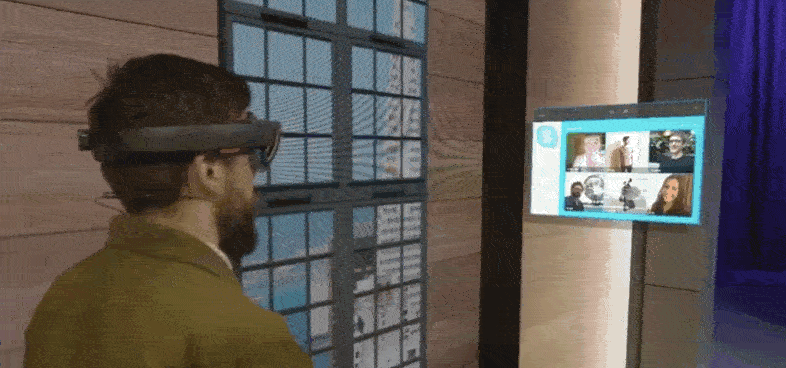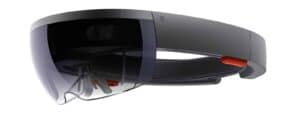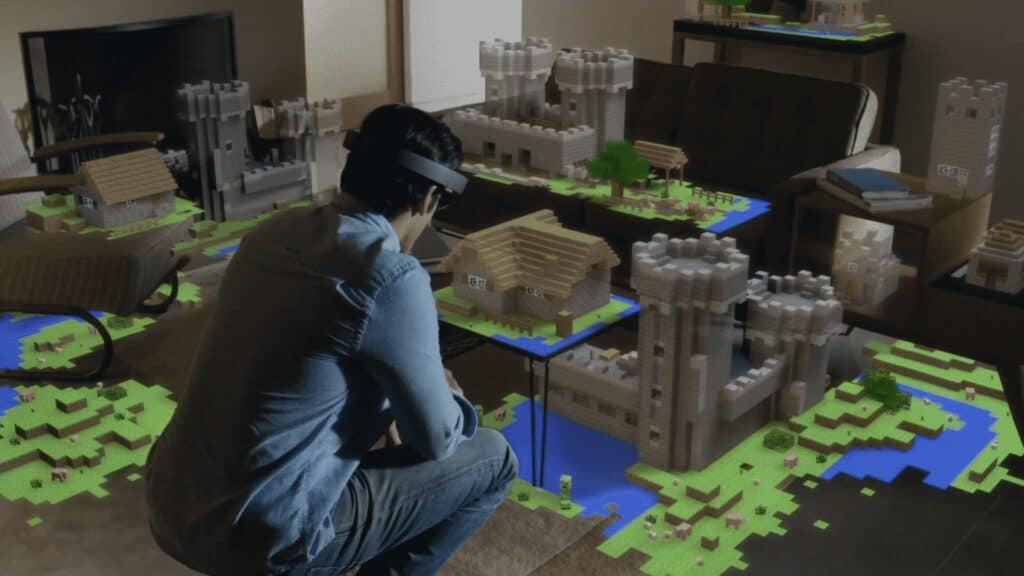Microsoft set the tech community abuzz with a demonstration of their new Wearable Technology, HoloLens, at the recent Build event. HoloLens works with Windows 10 to create a holographic augmented reality environment that is highly immersive and interactive.
Not a Gimmick
Let me just swallow my skepticism of company demos – these were stunning. And they were live demos. In one, a user opened up a holographic panel with a Skype call, walked across the room, and pinned to another wall – which already had digital windows “pinned” to it.
This is starting to look like something out of Minority Report:

The only aspect that is misleading here – and it is an issue – is that the field of view (FOV) for HoloLens is significantly narrower than it appears in the demo. With the camera rig that Microsoft is using, the audience/viewers get a much larger FOV. It’s a challenge Microsoft needs to resolve in subsequent versions of the device.
Learning Through Augmented Reality
What’s really new here is Microsoft’s focus on how the device can be used for learning. Two of the demos covered some amazing 3D anatomy lessons, and a video explored its use in architectural work.
As a fully untethered holographic computing device, HoloLens would let students virtually model and reposition digital objects in front of their eyes. And learning could take on an entirely new relationship to space and location with movable displays that travel with you across a room, or perhaps throughout a building or entire campus.
I’d like to think there will come a day when we no longer need physical screens (with all the attendant hardware) mounted on the walls of our classrooms. Something like HoloLens could make that a reality.
HoloLens and Learning
Long, long ago. . . there was Google Glass. And yes, some faculty found creative applications for it in the learning environment (on-the-spot videos, instructor feedback). But it never fully made the case for Wearable Technology in education. Few of the Glass apps supported learning, and it always seemed like your Smartphone could do so much more.
The potential of Glass for augmented reality experiences was seriously limited since the information was confined to a screen separate from the world in front of you. AR is truly effective only when everything is in the same field of vision.
HoloLens may not be a game-changer, but it offers new opportunities for learning through mixed reality experiences. More than anything else right now, it needs distribution – it needs to get into the hands of educators.
Where Microsoft may be Going
Two actions signal where Microsoft may be headed. First was their recent purchase (for $2.5 billion) of Mojang, the maker of one of the most popular games of all time, Minecraft. Hard to say what their plans are, but if you combine Minecraft with HoloLens, you can see the potential for an innovative digital maker space.
Secondly, Microsoft is working closely with developers. They are embracing the Apple model that a well-designed device is essential but not sufficient: you need a vibrant ecosystem of apps to make the hardware truly useful.
And once educators get their hands on HoloLens, it could lead to a wide range of innovative learning experiences.
But We’ll have to Wait
Unfortunately, you may be staring at your Apple Watch (if you have one) for a long, long time as HoloLens is not yet available.
Rumors were floating around the Build event that a developer version would be released, but participants walked away empty-handed. Maybe this summer . . . for developers. No one is saying.
Consumer versions are further off, and you can bet the early models will be costly.
But from what we’ve seen so far, we’re getting tantalizingly close to an augmented reality device that has the potential to transform learning.
Emory Craig is a writer, speaker, and consultant specializing in virtual reality (VR) and artificial intelligence (AI) with a rich background in art, new media, and higher education. A sought-after speaker at international conferences, he shares his unique insights on innovation and collaborates with universities, nonprofits, businesses, and international organizations to develop transformative initiatives in XR, AI, and digital ethics. Passionate about harnessing the potential of cutting-edge technologies, he explores the ethical ramifications of blending the real with the virtual, sparking meaningful conversations about the future of human experience in an increasingly interconnected world.


